
Plastic bottles find their way into just about every aspect of our daily lives. Manufacturers use them for a gamut of products that range from dishwashing fluid to rubbing alcohol to soda. You’ll likely spot at least one plastic bottle in the room you are sitting in right now.
We use so many plastic bottles that disposing of them has become a problem. The containers choke landfills and pollute the oceans.
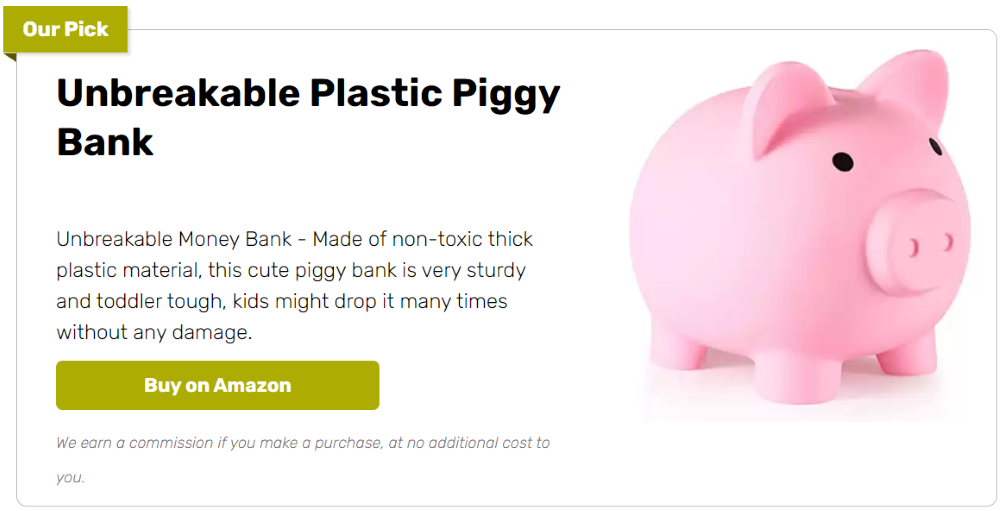
Do you have used soda bottles lying around at home? Instead of throwing them away, you can easily repurpose them. Put those old bottles to good use and turn them into a piggy bank.
This is perfect when you’re trying to save up for a trip or a favorite pair of shoes. You can also give these bottle piggy banks as a gift.
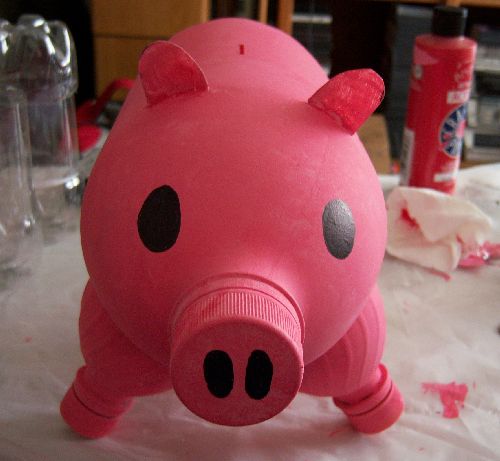
You may customize it according to your preference. If you wish to be really creative, you can do away with the usual pink color. Paint your bottle piggy bank any color you want – go crazy! Your imagination is the limit.
Gather your tools and materials and start creating!
Contents
Making a Piggy Bank from Used Soda Bottles
Materials
- EMPTY soda bottle (choose your preferred size)
- 4 20 oz soda or water bottles
- paint (whatever your preference is)
- sharpie
- liquid nails
- sandpaper
Tools
- Sharp knife or blade
- Scissors
- Paintbrush
Instructions
Prepare the Main Bottle
- Decide on the empty Coke bottle size you would like. Your piggy bank’s principal body will be this one.
- Fully rinse the bottle then let it dry.
Create the Coin Slot
- Slice a coin slot on the side of the bottle precisely with a knife or blade. Make sure the slot’s width fits coins but not too large such that coins could fall out readily.
- To make the coin slot safe and smooth, sand its edges with sandpaper.
Prepare the Legs
- Take four empty twenty-ounce water or drink bottles. Your piggy bank will be built on these as its legs.
- Cut the caps off every 20-ounce bottle such that the legs—about 2-3 inches from the bottom—are left.
- To soften the cuts’ edges, sand them.
Attach the Legs
- Around the main bottle, arrange the four cut-off bottle pieces—legs.
- Attach each leg firmly to the base of the main bottle using liquid nails. Make sure their distances match to give stability.
- Follow manufacturer’s directions on thorough drying of the wet nails.
Paint and Decorate
- Once the legs are securely attached and the glue is dry, paint the entire piggy bank with your preferred colors. Use a paintbrush to apply the paint evenly.
- Let the paint dry thoroughly. You might need to apply a second coat for better coverage.
Add Details
- Use a sharpie to draw eyes, a nose, and other details on the piggy bank. You can get creative and add any additional features you like.
- If you want to add more decorations, feel free to use stickers, glitter, or any other embellishments.
Finish Up
- Check all parts of the piggy bank to ensure everything is securely attached and fully dry.
- Once everything is set, your piggy bank is ready to use!
Click on any image to start the lightbox display. Use your Esc key to close the lightbox.


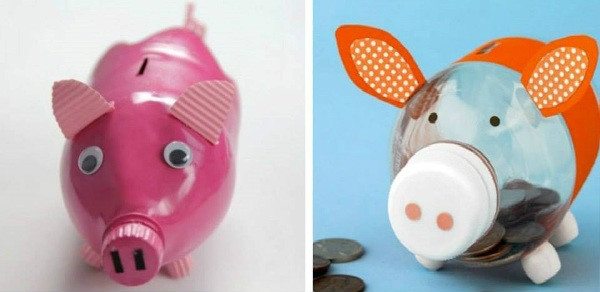

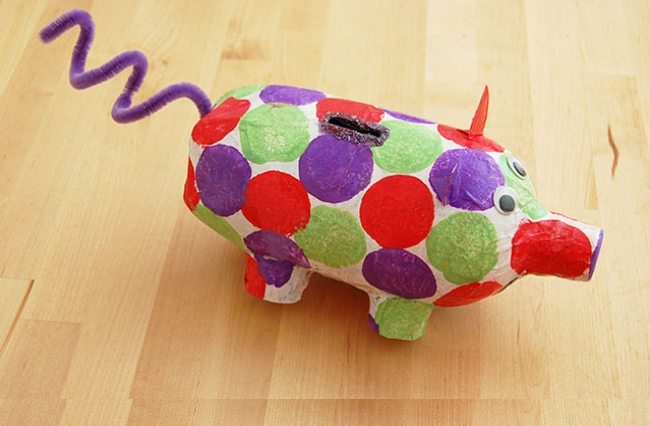



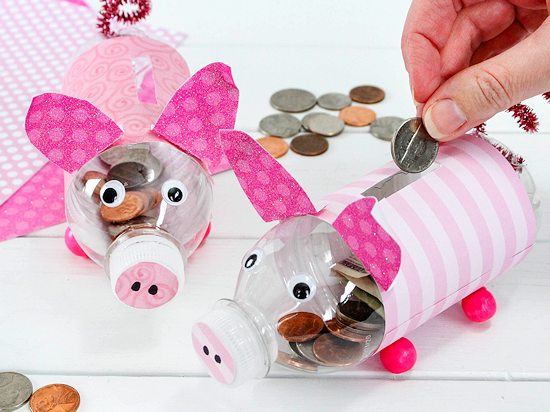
Thanks to sandypants for this great project. You can get step-by-step instructions here…
Here’s a quick video…
The Benefits of Using a Piggy Bank
One age-old approach for saving money is with a piggy bank. This straightforward yet powerful tool teaches people—especially young people—the benefits of saving and promotes sound financial practices. Although digital savings techniques have gained popularity, the conventional piggy bank has certain advantages that would complement contemporary saving plans.
Encourages the Habit of Saving
A piggy bank motivates consistent saving by offering a tactile reminder. Every time you drop a note or coin into the bank, you strengthen your tendency toward financial discipline. Children, who can watch their savings increase over time, may especially benefit from this practice since it helps them feel successful and motivated.
Teaches Financial Responsibility
Piggy banks help to teach financial responsibility. For youngsters, it provides a first teaching on financial management. They come to see that saving calls both discipline and patience. Reiterating the need of budgeting and preparation, adults can also gain from using a piggy bank to save for particular goals, such a vacation or a unique purchase.
Provides a Tangible Savings Experience
One cannot mimic the physical sensation of using a piggy bank with digital means. Seeing money grow in a piggy bank and handling it physically helps one to establish a real link to saves. Watching numbers rise on a screen can not be as fulfilling and inspiring as this visual and tangible one.
Facilitates Goal Setting
Effective for budgeting, piggy banks can be set up for particular financial targets. You might have various piggy banks for a vacation money, emergency savings, or a unique gift, for example. This method facilitates easy tracking of development and prioritizing of financial objectives.
Enhances Money Management Skills
Using a piggy bank improves financial sense. Regular savings help people to learn good resource allocation and future spending planning. Better financial judgments and a more orderly approach to saving and spending can follow from this habit.
Fun and Engaging for All Ages
People of many ages can find enjoyment and interest in piggy banks. While adults may take delight in the nostalgic and fulfilling process of saving, children appreciate the artistic element of painting their piggy banks. Everybody finds a piggy bank to be a charming and simple savings tool.
Promotes Environmental Consciousness
Using an old container as a piggy bank helps one be environmentally conscientious. Plastic bottles or jars can be recycled rather than a new savings jar. This habit helps to save money by stressing a sustainable way of living and cutting waste.
Using a piggy bank has many advantages beyond the financial ones. It teaches good money management techniques, promotes financial discipline, and offers a gratifying, physical means of see funds increase. A piggy bank is a great tool whether you’re educating a youngster about saving for a specific goal or finances.
Teaching Kids About Saving Money
Introducing children to the concept of saving money at a young age is crucial for developing good financial habits. A piggy bank can be an excellent tool for teaching kids the value of money, the importance of saving, and the basics of financial responsibility. Here are some effective strategies to help kids learn about saving money.
Start with a Piggy Bank
A piggy bank is a simple yet powerful tool to introduce kids to saving. Choose a fun and engaging design that appeals to your child, and encourage them to use it regularly. Explain that the money they save can be used for something special in the future, fostering a sense of anticipation and reward.
Set Savings Goals
Help your child set specific savings goals. Whether it’s a toy, a book, or an outing, having a clear goal makes saving more tangible and motivating. Break down the goal into smaller, achievable milestones to keep them encouraged along the way.
Use Real-Life Examples
Incorporate real-life examples to make the concept of saving relatable. Share stories of how saving money has helped you achieve goals or discuss how saving is essential for big purchases like family vacations or a new car. Relating these concepts to their experiences helps them understand the value of saving.
Match Their Savings
To incentivize saving, consider matching your child’s contributions. For every dollar they save, add an additional dollar (or a fraction of it). This matching system not only boosts their savings but also teaches them about the benefits of saving more and the concept of earning interest.
Create a Savings Chart
Visual aids can be very effective in teaching kids about saving. Create a savings chart where they can track their progress towards their goal. Each time they add money to their piggy bank, update the chart together. Seeing their savings grow visually reinforces the habit and keeps them motivated.
Introduce the Concept of Needs vs. Wants
Teach your child the difference between needs and wants. Explain that needs are essential items like food and clothing, while wants are non-essential items like toys and candy. This understanding helps them prioritize their spending and make better financial decisions in the future.
Involve Them in Family Budgeting
Involve your child in simple aspects of family budgeting. Show them how you plan for expenses and save for specific goals. This involvement helps them see the practical application of saving and budgeting, making the lessons more meaningful and relevant.
Reward Their Efforts
Acknowledge and reward your child’s efforts to save. Positive reinforcement, such as praise or a small treat, can go a long way in encouraging them to continue saving. Celebrating their progress makes the experience enjoyable and reinforces good financial habits.
Lead by Example
Children learn a lot by observing their parents. Demonstrate good saving habits by using a piggy bank or setting aside money for specific goals. Share your own saving experiences and challenges, showing them that saving is a lifelong skill.
Teaching kids about saving money is a valuable investment in their future. By using tools like piggy banks and incorporating practical, relatable lessons, you can instill financial discipline and responsibility from a young age. These foundational skills will help them navigate their financial journey with confidence and wisdom.
Conclusion
Making a piggy bank from used soda bottles is a simple and rewarding project. It encourages creativity and teaches the value of recycling. Plus, it provides a fun way to save money.
For more fun recycling projects, check out our milk jug igloo project!





